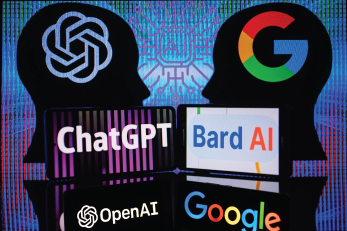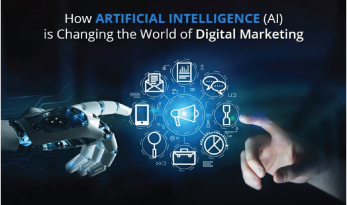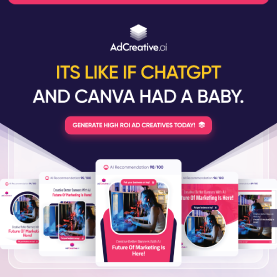The AI-Powered Shift: How Machine Learning is Transforming Marketing Analytics
Let’s be real—marketing has always been a game of numbers. Back in the day, we’d throw money into campaigns and pray something stuck. Maybe we’d track clicks or run A/B tests, but let’s face it: we were guessing more than we’d like to admit. Fast forward to today, and AI is flipping the script. It’s no longer about gut feelings and “what worked last time.” Now, machine learning algorithms are diving deep into consumer behavior, uncovering patterns we wouldn’t catch in a million years.
Take predictive analytics, for example. I remember running an e-commerce store where our ad spend was all over the place. We had seasonal spikes, random slumps, and customer churn that felt totally unpredictable. Then we plugged in an AI-driven predictive model, and boom—clarity. The system analyzed years of transaction history, market trends, and even weather patterns (because apparently, people buy more luxury items when it rains). The result? We knew exactly when demand would surge and adjusted our campaigns accordingly. No more guesswork—just data-backed strategy.
And then there’s customer segmentation. Back in the day, we’d lump our audience into a few generic buckets: “Young professionals,” “Stay-at-home parents,” “Tech enthusiasts.” But AI? It gets ridiculously specific. One tool we tested split our audience into micro-segments based on browsing behavior, purchase history, and even how long they hovered over a product page. We discovered that a certain segment of “impulse buyers” only converted when they saw free shipping in the first five seconds. Once we adjusted our pop-ups, conversions shot up by 32%. No manual number crunching—just machine learning doing its thing.
Sentiment analysis is another game-changer. AI can now scan thousands of social media comments and customer reviews in seconds, telling you exactly how your brand is perceived. I once assumed our product had a “premium” reputation—until AI sentiment analysis revealed that customers saw it as “overpriced.” That tiny distinction led us to rework our messaging, and suddenly, engagement spiked.
Bottom line? AI isn’t just a fancy buzzword—it’s a competitive advantage. If you’re still running marketing on intuition alone, you’re leaving money on the table. The brands leveraging AI aren’t just getting ahead; they’re rewriting the rules. And trust me, the ones who resist? They’ll be playing catch-up in no time.
Predictive Analytics for Future Trends: Cracking the Code to Stay Ahead
If there’s one thing I’ve learned in business, it’s that the people who win aren’t just reacting to trends—they’re anticipating them. It’s like playing chess while everyone else is playing checkers. That’s where predictive analytics comes in. It’s not just some buzzword; it’s your secret weapon for making strategic moves before the market shifts.
I remember when I first dabbled in predictive analytics. I was running an e-commerce store, and inventory management was an absolute nightmare. Some products sold out too fast, others collected dust in the warehouse. Then I started using predictive data models. Suddenly, I could forecast which items would blow up next month and which ones were fizzling out. Instead of guessing, I was making informed decisions, and my cash flow thanked me for it.
So, how does it work? In simple terms, predictive analytics uses AI and machine learning to analyze past data and identify patterns. Imagine being able to predict which products will trend next season, which marketing campaigns will perform best, or even which customers are about to bounce. Sounds like magic, right? It’s not—it’s just data science doing its thing.
Here’s where it gets really powerful:
- Anticipating Customer Needs
The key to staying ahead is knowing what your customers want before they do. Predictive models analyze purchase history, search behavior, and engagement patterns to suggest what products people are likely to buy next. Amazon does this brilliantly—ever notice how they recommend products that you suddenly realize you do need? Yeah, that’s predictive analytics at work. - Optimizing Inventory Like a Pro
Stocking the right products at the right time can make or break a business. Too much inventory? You’re bleeding cash. Too little? You’re missing out on sales. With predictive analytics, you can pinpoint demand fluctuations, ensuring you’re never overstocked or underprepared. Retail giants like Walmart leverage AI to optimize supply chains, and trust me, if it works for them, it can work for you. - Sharpening Your Marketing Targeting
Ever wondered why some ads seem to know exactly what you want? Predictive analytics fuels precision targeting. Platforms like Google Analytics 360 use AI-driven predictions to gauge purchase probability and customer lifetime value. That means you can double down on high-intent leads and stop wasting ad spend on low-converting prospects.
The Future of Predictive Analytics
As AI gets smarter, predictive analytics will become a must-have rather than a nice-to-have. Imagine personalizing customer journeys in real time or tweaking ad strategies before performance dips. The brands that embrace this will dominate—because when you can see the future, you make better moves.
The question is: Are you ready to play chess?
Real-Time Data Processing: The Game-Changer You Can’t Ignore
I remember the first time I ran a paid ad campaign. I poured hours into crafting the perfect copy, designing the slickest visuals, and segmenting my audience like some kind of marketing scientist. I hit “Launch” and sat back, convinced I had nailed it. But then… crickets. Barely any conversions, a pathetic CTR, and the sinking feeling that I had just set a pile of cash on fire.
That’s when I learned the hard way—static campaigns are dead. If you’re still running ads or launching content without real-time data processing, you’re playing a dangerous game. The digital landscape moves at breakneck speed, and if you’re not adapting on the fly, you’re losing.
What Is Real-Time Data Processing?
Imagine having a crystal ball that tells you exactly what’s working and what’s flopping—instantly. That’s real-time data processing in a nutshell. AI-powered tools now crunch massive datasets in real-time, letting you fine-tune your marketing efforts as they unfold. No more waiting days (or weeks) to see results. Instead, you can tweak, optimize, and pivot in the moment.
Why You Should Care (Like, Right Now)
- Instant Insights: Stop Guessing, Start Winning
Ever had an ad campaign start strong, only to nosedive overnight? Real-time analytics stop that from happening. You can detect trends, spot engagement dips, and fix problems before they drain your budget. If an audience segment isn’t converting, real-time data tells you—so you can switch gears before it’s too late. - Optimized Campaigns: Tweak, Test, Triumph
Let’s say your headline isn’t clicking with your audience. Instead of waiting weeks for a full campaign post-mortem, you get live feedback. Platforms like Optimizely and Google Optimize allow you to run real-time A/B tests, swap creatives, or adjust CTA placement mid-flight. Small tweaks, massive impact. - Enhanced Customer Experience: Be There When It Matters
Ever messaged a brand and gotten a response three days later? Yeah, no thanks. AI chatbots like Drift analyze customer inquiries in real time, ensuring people get immediate, personalized responses. The result? Higher engagement, happier customers, and fewer abandoned carts.
How This Changes the Game
Here’s the truth: Marketing without real-time data is like driving blindfolded. The brands winning today aren’t just “creative” or “lucky”—they’re leveraging AI-powered analytics to make smarter, faster decisions. With tools that adjust bids, optimize targeting, and refine messaging in seconds, you’re no longer hoping for results—you’re engineering them.
The Future: Adapt or Get Left Behind
AI-driven real-time data processing is only getting more powerful. We’re moving towards predictive analytics, where machines won’t just tell us what’s happening now, but what’s about to happen. Imagine getting a heads-up before your engagement drops or knowing exactly when to scale an ad before your competitors do.
Bottom line? Real-time data isn’t optional—it’s the new standard. The sooner you embrace it, the sooner you start winning. 🚀
3. Sentiment Analysis for Better Customer Understanding
What Is Sentiment Analysis?
Sentiment analysis uses AI to evaluate the tone and emotion behind customer feedback, social media posts, and reviews. By understanding how customers feel, marketers can adapt their strategies to align with audience sentiment.
Benefits
- Identifying Trends: Spot shifts in customer sentiment early.
- Addressing Pain Points: Proactively solve issues before they escalate.
- Enhancing Brand Reputation: Respond to negative feedback in a timely and effective manner.
Real-World Examples
- MonkeyLearn: Analyzes customer reviews to highlight recurring themes and emotions.
- IBM Watson: Provides detailed sentiment insights from unstructured data like social media posts.
Future Impact
As sentiment analysis tools evolve, marketers will be able to craft campaigns that resonate deeply with their audiences, improving customer loyalty and satisfaction.
4. Automated Personalization at Scale
What Is Automated Personalization?
AI enables marketers to create highly personalized customer experiences at scale by analyzing individual behavior, preferences, and interactions.
Benefits
- Hyper-Relevant Content: Deliver the right message at the right time.
- Increased Conversions: Personalized recommendations drive higher engagement and sales.
- Efficient Scaling: Achieve personalization without manual intervention.
Real-World Examples
- Netflix: Uses AI to recommend content tailored to individual viewing habits.
- Amazon: Provides product recommendations based on browsing and purchase history.
Future Impact
The ability to automate personalization will redefine customer journeys, making them more seamless and relevant, ultimately boosting customer retention and ROI.
5. Advanced Attribution Models
What Are Advanced Attribution Models?
AI-enhanced attribution models track and evaluate the performance of multiple marketing channels to determine their contribution to conversions.
Benefits
- Accurate Channel Evaluation: Understand which channels deliver the best ROI.
- Optimized Budget Allocation: Focus resources on high-performing channels.
- Improved Strategy: Make data-driven decisions for future campaigns.
Real-World Examples
- Google Attribution 360: Tracks the entire customer journey to provide detailed attribution insights.
- Adobe Analytics AI Models: Use machine learning to analyze multi-channel data for better decision-making.
Future Impact
As attribution models become more precise, marketers will gain clearer insights into their strategies, leading to more efficient campaigns and better use of marketing budgets.
Conclusion
The future of marketing analytics is undeniably intertwined with AI. From predictive analytics to real-time processing, sentiment analysis, automated personalization, and advanced attribution models, these techniques are reshaping how marketers understand and engage with their audiences. Adopting AI-powered tools and strategies isn’t just a competitive advantage—it’s a necessity in today’s fast-paced digital world.
Are you ready to embrace the future of marketing analytics? Start exploring these AI techniques today and stay ahead of the curve.


